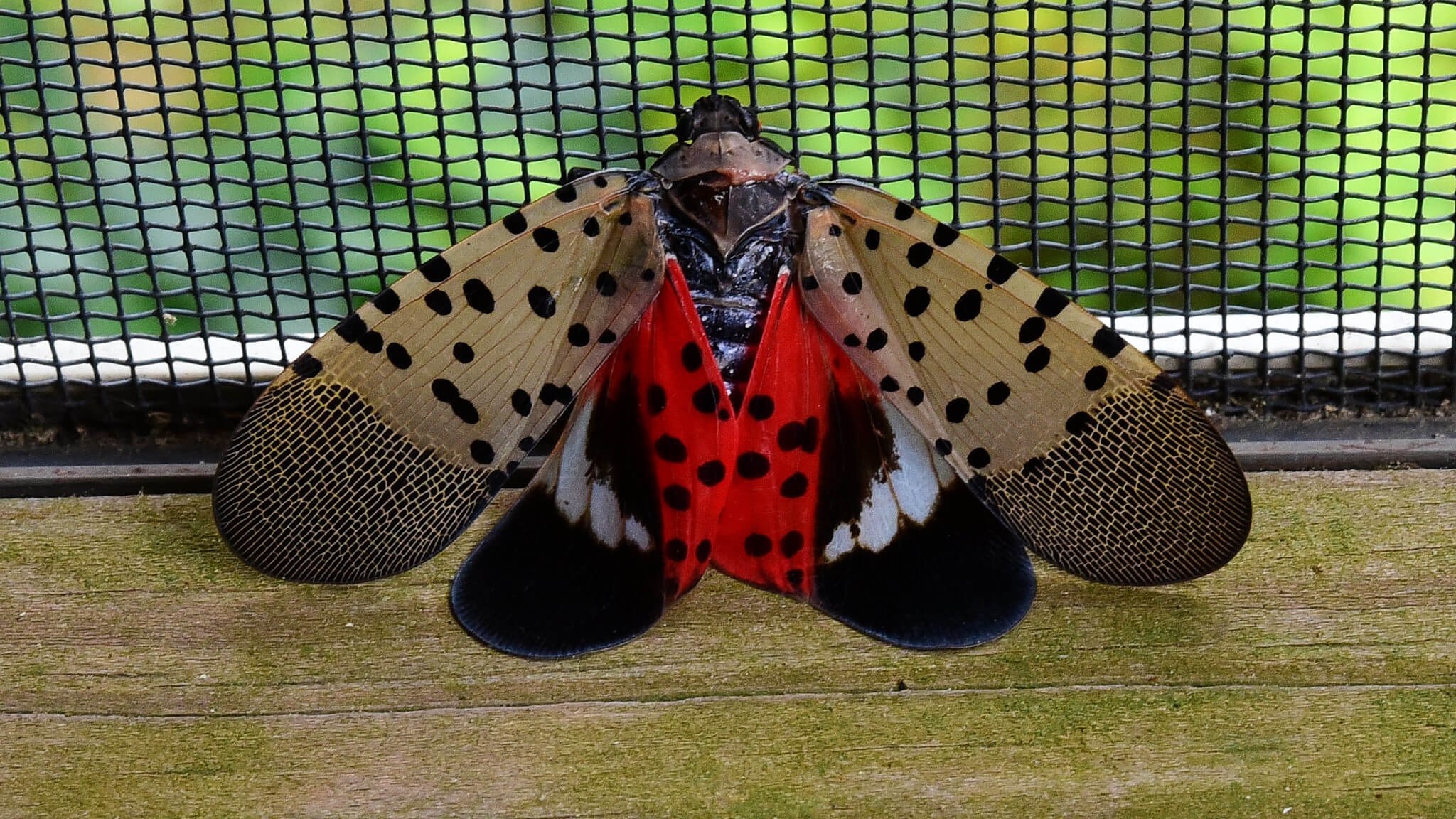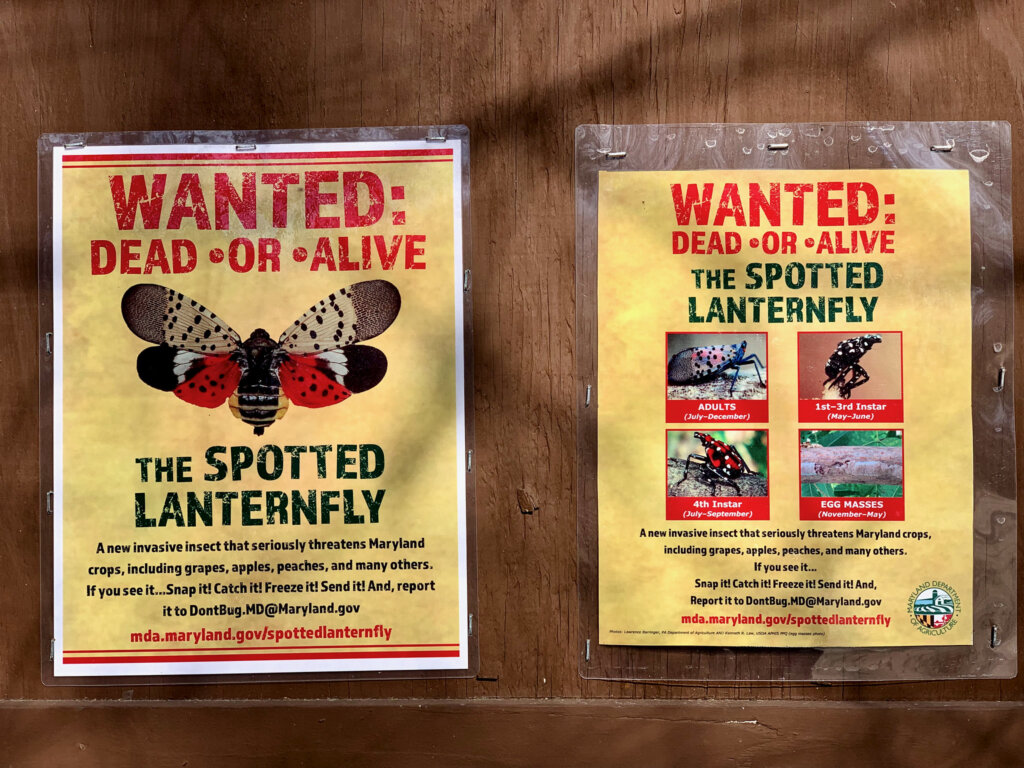The lanternfly is a menace. Does Jewish law permit squishing it?
Agricultural experts encourage killing the invasive species

Graphic by Angelie Zaslavsky
In New Jersey, home owners sit with spray bottles of soapy water at hand, ready to do battle against the invader. In Brooklyn’s Prospect Park, ordinary citizens have turned vigilante, roaming around on seek-and-destroy missions. Legions of day campers on the ferry to Governors Island went on a stomping spree recently when a swarm of the insidious creatures landed on the deck.
Their prey? The spotted lanternfly. Park and agricultural officials throughout the mid-Atlantic are encouraging the public to kill them.
“Harming our city’s wildlife is prohibited, but in an effort to slow the spread of this troublesome species, we are putting out a one-time call: If you see a spotted lanternfly, please squish and dispose of this invasive pest,” reads a notice from the New York City Department of Parks and Recreation.
But as governments push for a mass culling, some rabbis aren’t so sure whether Jews should participate in the slaughter. They may believe their faith is simply incompatible with such murderous behavior, or point to a Torah passage in Deuteronomy known as bal tashchit, “thou shall not destroy.”
The teaching is put to the test, however, with the far-reaching outbreak of the spotted lanternfly.

The insect, native to China and southeast Asia, was first seen in the United States in 2014 and, in the ensuing years, spread from Pennsylvania to New York, New Jersey, and beyond, with outbreaks found as far west as Indiana and as far south as North Carolina.
While the lanternfly’s appearance does have a certain beauty to it with its bright red wings, it threatens vegetation, including apple and other species of fruit tree, by excreting a sugary substance that can lead to harmful mold growth on trees.
The Torah says nothing about the lanternfly, but it does provide applicable guidance, said Eliezer B. Diamond, the Rabbi Judah Nadich Associate Professor of Talmud and Rabbinics at the Jewish Theological Seminary.
“Under certain circumstances we Jews are commanded to kill species that endanger us,” he wrote in an email, offering up a poisonous snake as an example. In the same way, he continued, we are permitted to kill species that cause us discomfort, such as lice. He referred to the Torah’s prime example: the obligation to kill a goring ox.
Killing lanternflies would be permissible, Diamond posits, in the same way that the Talmud says it’s fine to uproot grape vines or trees that are choking off your neighbor’s trees — if your neighbor planted first. “In other words, agricultural threats may be responded to with the destruction of harmful vegetation — and presumably other life forms as well.”
So go ahead and squish lanternflies?
Not necessarily.
There’s also a matter of scale to consider. Given how pervasive the lanternfly problem has become, killing a bug or two a day would not likely do much good — and that changes the moral equation, Diamond wrote.
“If killing one or two of these lanternflies will have no noticeable effect, given our general reverence for life in all its forms,” he said, citing Bal Tashchit, “I see no justification for killing them.”
Rabbi Jonathan Bernhard, executive director of the Jewish Initiative for Animals, based in Portland, Oregon, is similarly reluctant to end the life of a lanternfly.
“Taking care of nature is, in fact, what our tradition requires us to do,” he said. “We are meant to be shomrei adama, the guardians of the Earth. Sometimes, that will bring up difficult choices, because this is an imperfect world.”
To that end, Bernhard said he could not recommend going out and joining in the communal squashing of lanternflies. Instead, he said he would hope that experts could come up with other solutions for dealing with the problem.
He doesn’t minimize it, though.
While something as tiny as a lanternfly might seem small in the grand scheme of things, the problems they cause can be quite large, Bernhard said. He sees the morality at play in deciding to stomp or not to stomp as equally weighty.
“You’re talking about how we fulfill our responsibilities to take care of the Earth,” he said.
“We have to step in and figure out the most compassionate way of dealing with it, even if it leads us down paths we are ultimately uncomfortable with, because we simply can’t let all these trees be destroyed.”























